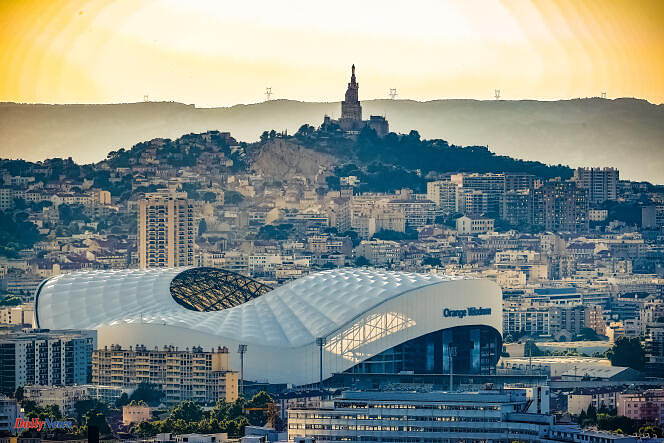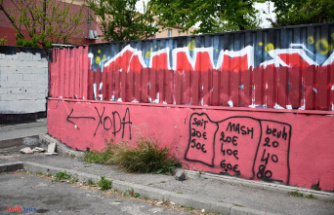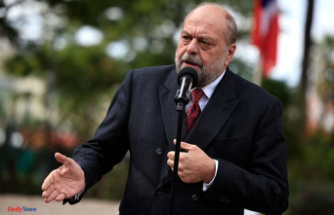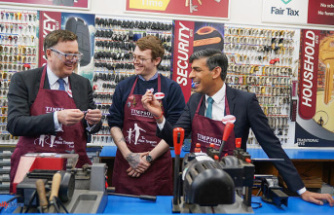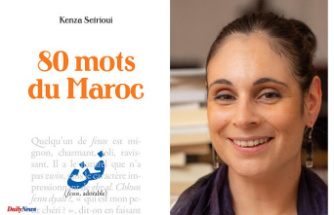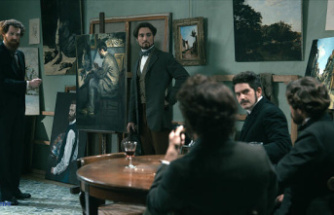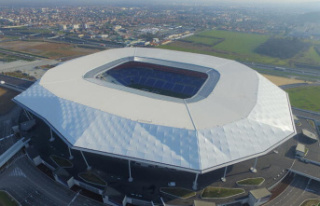“The Vélodrome is the home of the Marseillais. This is where we meet. Where we win, where we lose. Where we win more than we lose, assures a spectator. This is where we party. » An attentive observer of stadium life, Christian Bromberger, professor emeritus at the University of Aix-Marseille, is the founder of the Institute of Anthropology and Social Ethnology and he sees it every time: "The stadium is the only space in the city where populations very different in their status and condition come together. » Above all, he is the only one to erase their differences, argues Romain Canuti, sports journalist for several Marseille media. “At the beach, there are some who have Vilebrequin swim trunks, and others who are in Quechua. Here, we all have the same jersey, that of OM. »
This house of the Marseillais has undergone several major transformations since the laying of its first foundations, and it has not always been so well loved by the Phocaeans. In 1938, the city was to host football World Cup matches, but at the time, the general public mainly favored cycling. It is therefore a circular track, a velodrome, which is built on the land of former automobile factories, to the south of the city. There is also a cinder – an athletics track – and rugby players also come to the central lawn. Not to mention tennis, hockey, motorcycle competitions... but also pétanque, and even greyhound racing. The Olympique de Marseille club has its own stadium, the Huveaune, and is reluctant to pay the city rent, which it considers too high, to settle at the Vélodrome.
“A symbol, like Notre-Dame de la Garde”
For a long time, it was politics that decided. A financial standoff begins between the club and the city administered by Gaston Deferre, in full development with, in particular, the Cité radieuse. In 1966, OM reached the first division – the equivalent of Ligue 1 today – and the town hall revised its rent requirements downward. During this time, the Huveaune deteriorated and the public became more numerous: at the beginning of the 1970s, a first renovation of the Vélodrome deprived it of its cycling and athletics tracks to increase its capacity to 55 000 viewers. From there, the stadium became “a symbol of Marseille, in the same way as Notre-Dame de la Garde [the basilica which governs the city], notes Christian Bromberger. But the Good Mother is a religious symbol, and not everyone adheres to it. » While in football…
The latest major renovations made to the stadium for Euro 2016, with the addition of a metal structure used to cover the spectators and the increase in the number of seats to more than 67,000, have finally convinced the Marseillais. From the press gallery, journalist Romain Canuti appreciates the atmosphere. “At the Vélodrome, it’s the audience that makes the show exceptional. The volcano side of the stadium takes on its full meaning. It’s a big venue and with such a large audience, it’s quite dizzying. When you are used to the Vélodrome, all the other stadiums seem small. »
The geographical location of the stadium, in the heart of what is today one of the most affluent districts of the city, the 8th arrondissement, helps to unite the people of Marseillais around their team: young people from the very popular northern districts come to the Vélodrome to support the players, inserting themselves for a few hours, at least, into the life of the city without distinction of social origin. “In the past, it was either the communists or the parishes who were responsible for youth,” notes Christian Bromberger. Today, it is the supporters’ clubs. This is what makes me say that stadiums have become the new place for politics. »
We must understand the word politics in its primary meaning, that of the life of the city. According to the ethnologist, the stadium would be a modern agora which brings together citizens from all walks of life. Supporters form groups within which we debate and help each other to defend common interests. By also supervising young people, we introduce them to community life. Romain Canuti agrees: “All ages and all neighborhoods come together here, and it’s not a myth: once we’re here, we’re all on an equal footing. »
Season 3 of the “Archi interesting” podcast is produced on the occasion of the exhibition “Once upon a time the stadiums”, presented from March 20 to September 16, 2024 at the Cité de l’architecture et du patrimoine.

